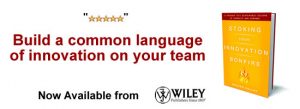How to build successful community open innovation networks

Everyone seems interested in getting the most impact out of their innovation efforts. Collaborative Innovation Networks (COINs) have mushroomed since the invention of the Internet and cheap mobile communications. Community based innovation and biomedical and health online innovation networks have the potential to speed new product development, offer alternative financing platforms for early stage ventures, provide education, information and support to those with particular diseases and help to lower the costs and speed of clinical trials. A recently announced collaboration between the FDA and PatientsLIkeMe will make it easier to do post marketing surveillance for drugs.
However, questions remain about their effectiveness in creating value, security, commercial and clinical validity, legal status and sustainability.
A important question is whether COINs, particularly in biosience and health, create lasting impact, and , if so, under what circumstances. Based on my experience co-founding a non-profit COIN and contributing to efforts to transform it into a sustainable entity that meets its mission i.e. getting biomedical and health ideas to patients, leaderpreneurs need to overcome several hurdles:
1. A relentless focus on advancing a clearly defined, easy to understand mission.
2. Creating and validating a business model that generates enough revenue to sustain the organization.
3. A marketing effort that uses state of the art social media techniques to target those most interested in supporting your mission.
4. Minimizing spending on things that don’t add user defined value.
5. Continually offering new products and services as part of the platform.
6. Telling your story in a way that it appeals to the heart, not the head of potential supporters.
7. Engaging and building the community of interest until it reaches a tipping point.
8. Transitioning from working in the COIN to working on the COIN once it has reached a critical mass.
9. Cheaply creating and killing experiments early when it is clear they won’t yield positive results
10. Expanding your influence to interface or open networks with overlapping interests. COINs need to be COPINs-collaborative open innovation networks
Building collaborative open innovation networks requires:
- An organization with leadership to coordinate, grow and engage the community of interest
- A compelling value proposition that meets the jobs, gains and pains of participant stakeholders
- A communications plan that uses various message delivery channels
4. Metrics and a dashboard to measure both inputs and valid outputs
5. A viable business model
6. Leadership
7. Network engagement and advocacy
8. Innovation
9. Branding
10. A sustainable competitive advantage
Collaborative, or open innovation, collaborative innovation, are “…activities organizations use to improve their rates of innovation and problem solving by more effectively leveraging the diverse ideas and insights of employees, customers and partners.â€Â Here are some ways to measure their efficiency and effectiveness.
There are four essential steps to open innovation.
1. Obtaining innovations from external sources
2. Integrating innovations
3. Commercializing
4. Knowledge transfer programs during the interactions
Here are some tips on how to build a better sandbox.
COPINS can be as narrow or as wide as you like. For example, you can create a COPIN that links different academic entities on one campus v one that is an intercampus COPIN v one that connects different universities in the same state with other parts of regional innovation ecosystems. Or, you can create a global one.
Here are some ways to diversify your network.
Building your COPIN to make an impact is but the initial step. To reach your SMARTCOPIN goals, the community will need to evolve along a pathway that measures inputs, processes, outputs and outcomes, not just vanity numbers on a Linkedin group.
Image by TheAndrasBarta from Pixabay
Wait! Before you go…
Choose how you want the latest innovation content delivered to you:
- Daily — RSS Feed — Email — Twitter — Facebook — Linkedin Today
- Weekly — Email Newsletter — Free Magazine — Linkedin Group
 Arlen Meyers, MD, MBA is the President and CEO of the Society of Physician Entrepreneurs at www.sopenet.org and co-editor of Digital Health Entrepreneurship
Arlen Meyers, MD, MBA is the President and CEO of the Society of Physician Entrepreneurs at www.sopenet.org and co-editor of Digital Health Entrepreneurship
NEVER MISS ANOTHER NEWSLETTER!
LATEST BLOGS
Starbucks and Big Tobacco
Back in the 1950’s smoking was glamorous, and just about everybody who was anybody smoked cigarettes. Then came the discovery, to the shock of millions, that sucking smoke into your lungs might not be good for you. Then came another revelation that one of the substances in tobacco, nicotine, which was used as a poison by the Egyptians during the times of the Great Pyramids, is addictive. People then began a mass exodus from the consumption of nicotine via inhaled smoke.
Read MoreWal-Mart Goes Green – What about your company?
With the price of gas above $3.00, some companies (and hopefully all) are beginning to look at the fuel efficiency of their fleets. Wal-Mart is the most public example of this with its trucking fleet. Its efforts include:
Read More




